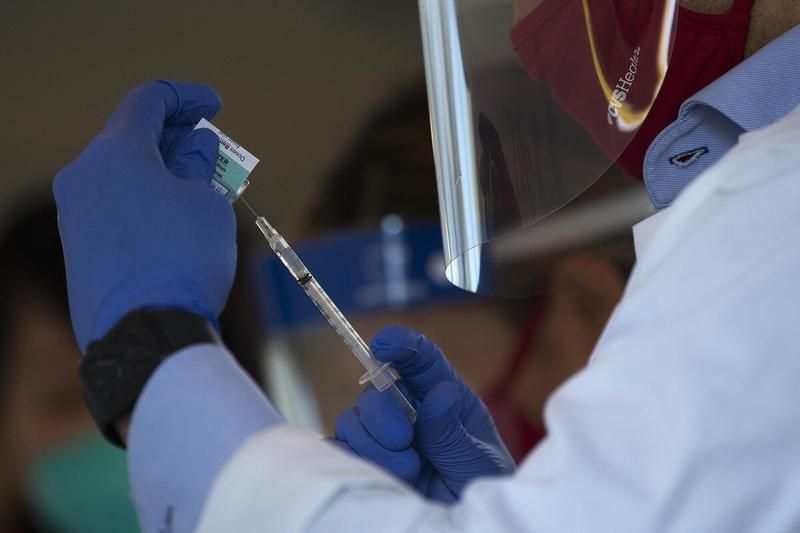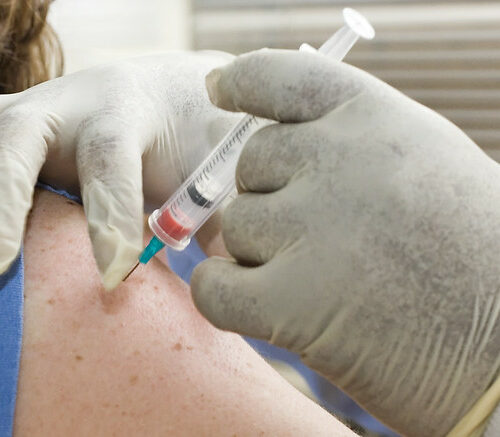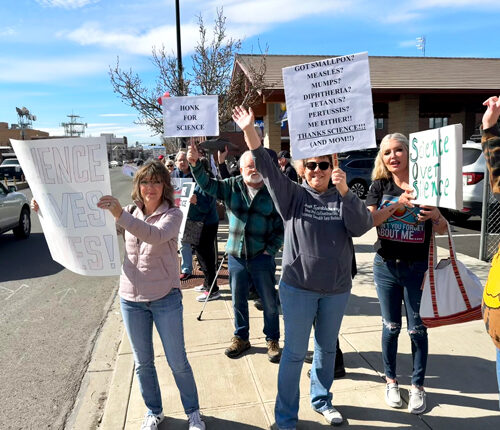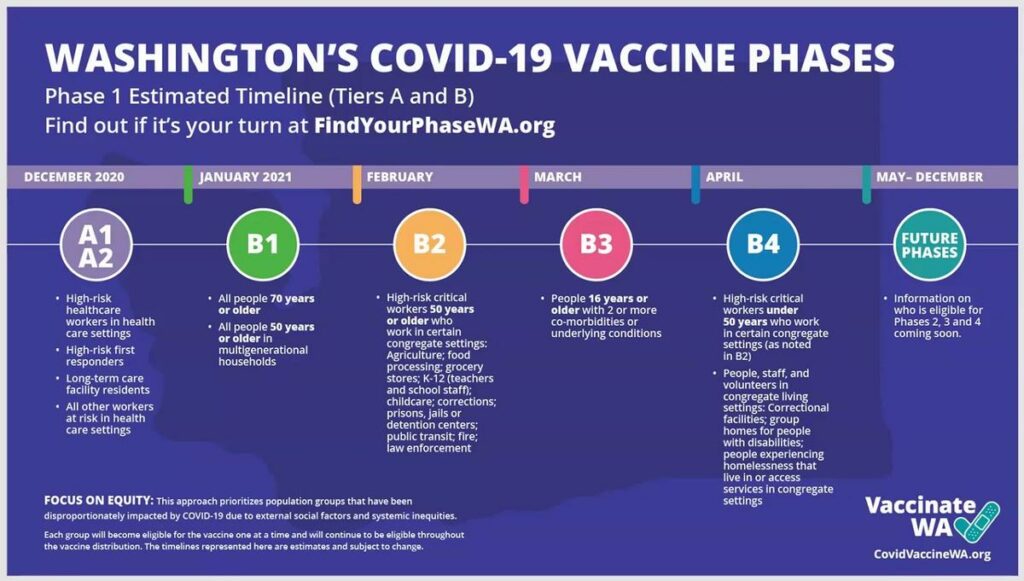
Who Goes Next? Timeline, New Tiers For COVID Vaccine Laid Out For Washingtonians
READ ON
People age 70 and older as well as some people living with an elder will be next in line for the COVID-19 vaccine in Washington. The state Department of Health on Wednesday provided awaited details for whose turn comes when to get the precious and scarce shots.
The state health department and Washington governor’s office made significant modifications to a COVID-19 vaccine prioritization framework recommended by the federal Centers for Disease Control and Prevention last month. States got the final say on the allocation list for their jurisdictions.
Right now, the COVID-19 shots made by Pfizer and Moderna are limited to health care workers, first responders and nursing homes. The timeline after that in Washington state will be divided into four tiers, which will probably stretch through April.
ALSO SEE: Coronavirus News, Updates, Resources From NWPB
“These are really tough decisions. We wish there was vaccine right away for all,” assistant health secretary Michele Roberts told reporters on a briefing call. “We have created these phases to make sure we are distributing vaccine in an equitable way to protect those in our state who are most at risk.”
The next phase — dubbed Tier B1 — includes two groups: All people aged 70 and older and people aged 50 and over who live in multigenerational households. Roberts said these oldest Washingtonians will probably get inoculated beginning late this month.
The seniors will be followed beginning in February by Tier B2 — teachers, childcare workers, cops and firefighters, transit drivers, grocery workers, agricultural industry workers and corrections department staffers — as long as they’re 50 or older.
Adults of all ages with multiple underlying health conditions will get their turn after that, probably in March, as part of Tier B3.
The fourth tier slated for April covers remaining eligible high-risk essential workers under age 50. This phase also includes inmates in jails and prisons, residents of group homes for the disabled and people living in homeless shelters.
Healthy members of the general public will probably become eligible for inoculation in late spring through summer.
What’s new in this iteration of the prioritization list?
The introduction of the age 50 threshold is perhaps the most significant departure from the federal vaccine allocation guidelines released last month. In the CDC advisory panel’s earlier framework, essential workers of all ages would qualify for early vaccination.
“States and jurisdictions are going to have to narrow within those groups because unfortunately, there just is not enough vaccine yet,” Roberts said.
The state’s largest teachers union welcomed the placement of educators near the front of the line, but declined to predict what impact this could have on reopening more schools for in-person learning.
“We are relieved that school employees in higher-risk settings will receive priority access to the COVID vaccine,” said Washington Education Association President Larry Delaney in an emailed statement Thursday.
Delaney added that many other strategies still need to be ironed out for remote teachers to be comfortable to return to classrooms. Those include ventilation improvements, rearranging classrooms for physical distancing and organizing students into cohorts that stay together throughout the school day.
The state’s decision to slot teachers under age 50 into Tier B4 in April quickly generated static on social media from parents who fear this will hinder getting all students back in class by spring.
The state’s new vaccination timeline and tiers appear to have demoted postal workers, manufacturing workers and some critical infrastructure professions compared to the expectations set by the CDC’s recommended framework. During a brief phone call, the president of the state association of letter carrier unions in Washington said he was upset and concerned about being left out.
ALSO SEE: Coronavirus News, Updates, Resources From NWPB
Some counties and rural hospital districts are eager to get started on the next phase, the newly dubbed Tier B1, as soon as possible. Kittitas County Public Health emailed a notice saying it was ready to begin vaccinating eligible senior citizens as soon as it receives its next shipment of COVID-19 vaccines.
In northeast Washington, Ferry County Memorial Hospital Chief Nursing Officer Cindy Chase said Monday that the initial vaccination phase for health care workers in her community was “just about done.” She too described feeling pressure from people to get moving on the subsequent phases.
Meanwhile, other counties are still in the early days. Whatcom County Health Department’s vaccination lead, Amy Hockenberry, said in a media briefing Wednesday that the Bellingham area has only received about 37% of the doses needed to cover everyone in the initial phase.
Concern about pace of vaccination so far
The overall slower than expected pace of vaccination is an ongoing concern in the medical community and among the wider public.
As of Thursday, the Pacific Northwest states ranked low in terms of share of doses distributed that had actually been administered, according to tracking data from the CDC. Oregon was ranked 46th worst in the nation having used 24% of shots it received. Washington state was 40th (26% used) and Idaho ranked 36th from the top with 28% of shots used. The national average was close to 32%.
“I know that for some it feels like it is taking a long time to get vaccines into arms,” Washington Secretary of Health Dr. Umair Shah said. “Vaccination at this scale and on this timeline is a first and involves a lot of complex planning and logistics. We are continuing to look at how we can speed up the process. That is our number one priority.”
Shah asked for patience during a teleconference on Wednesday. He said an unpredictable delivery schedule and the Christmas and New Year’s holidays slowed things down at the beginning of the vaccination drive, but added the pace is picking up now.
As of Tuesday, the state Department of Health said Washington had received 425,900 doses of the two COVID-19 vaccines. Of that supply, health care providers had injected 110,225 doses in people’s arms. The state agency cautioned that because of data reporting lags, the actual number of doses administered could be higher.
PhaseFinder online tool unveiled
The state health department this week activated a webpage intended to help people learn when their turn for vaccination is coming.
Roberts said the online tool called PhaseFinder is in the test stage right now. Currently, it can only confirm eligibility for people in the initial Tier A1/A2. The tool relies on answers to a short questionnaire that users fill out. After further upgrades in the coming few weeks, it should have the capability to tell currently ineligible people which future vaccination phase they fall into.
Related Stories:

Whitman County reports first flu-related death of the season
Hospitalman Yenifer Gutierrez, left, and Hospitalman Brashea Ojeda treat COVID patients in the ICU Aboard USNS Comfort in April of 2020. Influenza deaths surpassed COVID-19 deaths for this first time

Washington state reports 7-year peak in influenza-related deaths
The Washington state Department of Health reported on March 20th that influenza activity reached its highest levels in seven years, with the most flu-related deaths since the 2017-2018 flu season.

Dozens in Yakima rally to support science for national protest
Around 50 people gathered for Yakima’s Stand Up for Science rally on Friday. People around the country attended science protests at the same time. (Credit: Courtney Flatt / NWPB) Listen
















